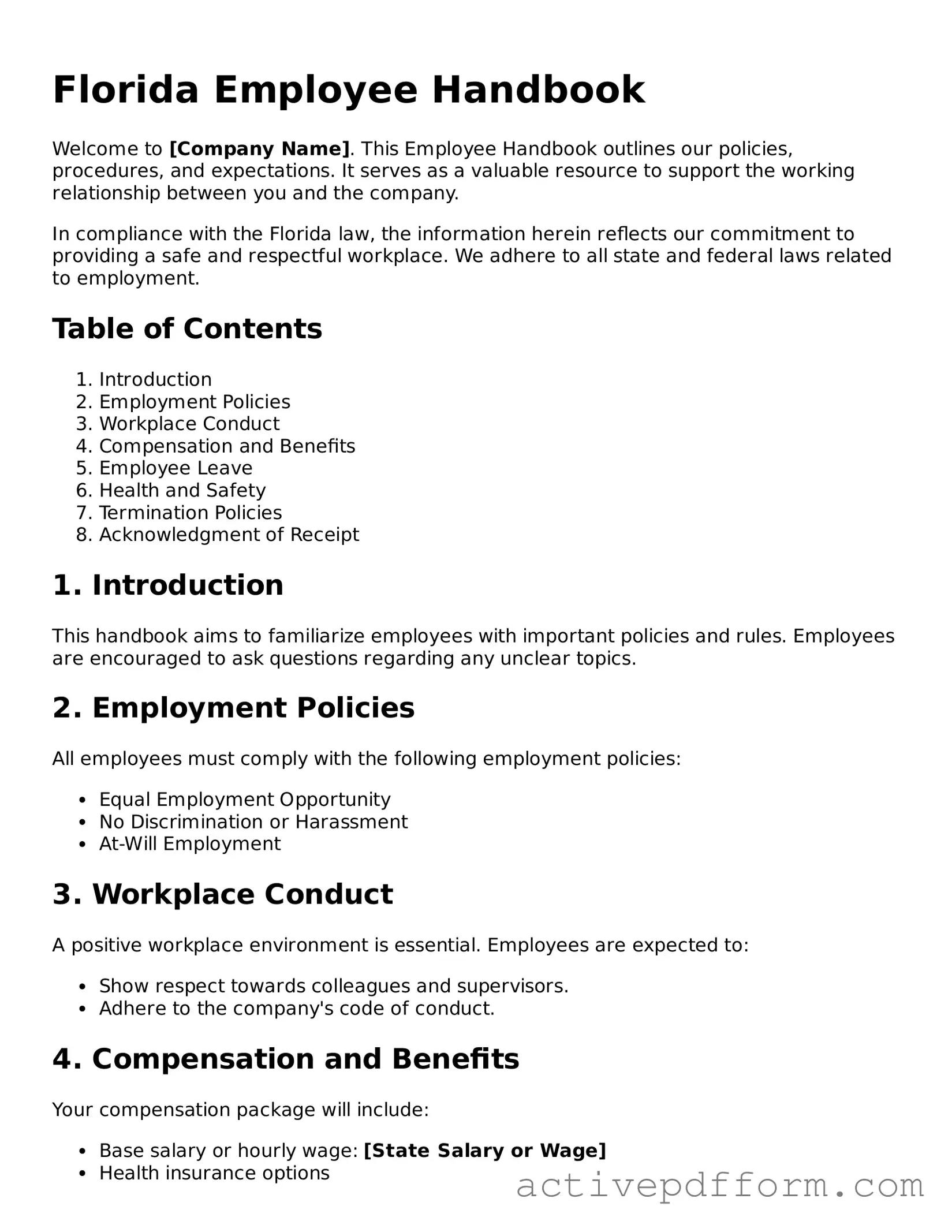What is the Florida Employee Handbook form?
The Florida Employee Handbook form is a document that outlines the policies, procedures, and expectations for employees working in Florida. It serves as a guide for both employers and employees to understand their rights and responsibilities in the workplace.
Why is an Employee Handbook important?
An Employee Handbook is crucial because it helps set clear expectations for behavior and performance. It can also protect the employer from potential legal issues by ensuring that employees are aware of company policies and procedures.
Who should receive a copy of the Employee Handbook?
All employees should receive a copy of the Employee Handbook upon hire. This ensures that everyone is informed of the company’s policies from the beginning of their employment. It is also advisable to provide updates whenever changes occur.
How often should the Employee Handbook be updated?
The Employee Handbook should be reviewed and updated regularly, at least once a year, or whenever there are significant changes to company policies, state laws, or federal regulations. This helps maintain compliance and keeps employees informed.
Can an Employee Handbook be tailored to specific departments?
Yes, an Employee Handbook can be customized to address the unique needs of different departments within a company. However, all employees should still receive a copy of the general policies that apply to the entire organization.
What should be included in the Employee Handbook?
Key components of an Employee Handbook should include company values, code of conduct, attendance policies, benefits information, anti-discrimination policies, and procedures for reporting grievances. Each section should be clear and easy to understand.
Is it necessary to have employees sign an acknowledgment of receipt?
Yes, having employees sign an acknowledgment of receipt is recommended. This provides proof that they have received and understood the Employee Handbook, which can be beneficial in case of disputes or misunderstandings in the future.
What happens if an employee violates a policy outlined in the Handbook?
If an employee violates a policy, the consequences will depend on the severity of the violation and the company’s disciplinary procedures. This may range from a verbal warning to termination, depending on the situation and the policies in place.
Can employees suggest changes to the Employee Handbook?
Employees are encouraged to provide feedback and suggest changes to the Employee Handbook. This can foster a collaborative work environment and ensure that the policies reflect the needs and concerns of the workforce.
Where can I find a template for the Florida Employee Handbook?
Templates for the Florida Employee Handbook can be found online through various human resources websites or legal resources. However, it is advisable to consult with a legal professional to ensure compliance with state and federal laws.
